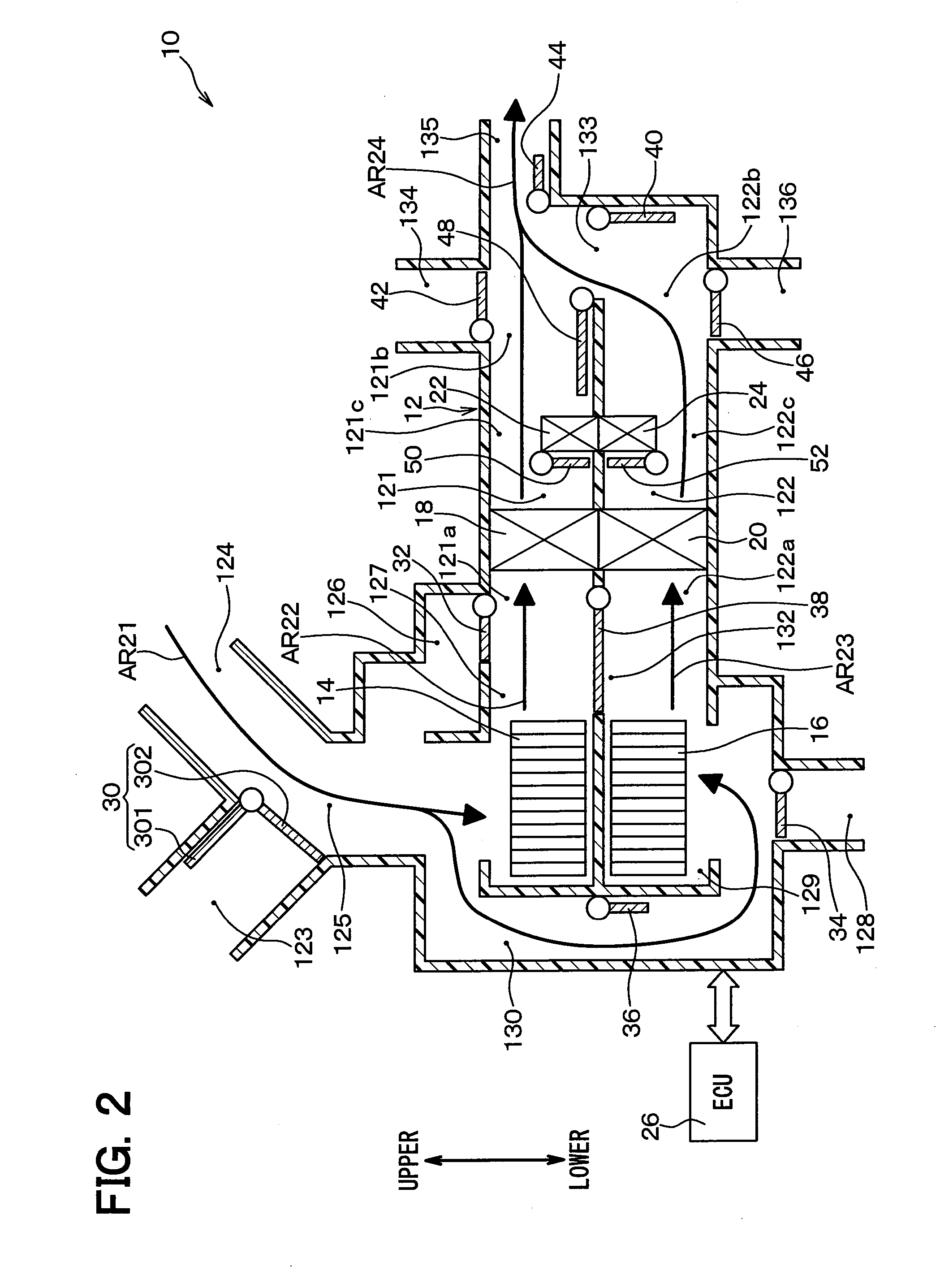Vehicular air-conditioning unit
- Summary
- Abstract
- Description
- Claims
- Application Information
AI Technical Summary
Benefits of technology
Problems solved by technology
Method used
Image
Examples
first embodiment
[0024]FIG. 1 is a schematic sectional view illustrating a vehicular air-conditioning unit 10 of the present embodiment. The vehicular air-conditioning unit 10 (referred to as an air-conditioning unit 10 hereafter) is disposed in a front area in a vehicle compartment. The air-conditioning unit 10 constitutes, for example, a part of an air conditioner for a vehicle provided with a refrigeration cycle that has a compressor and a condenser disposed in an engine room. An arrow showing an upper-lower direction in FIG. 1 shows an upper-lower direction on a condition where the air-conditioning unit 10 is disposed in the vehicle. Hereafter, a vehicle upper-lower direction that is the upper-lower direction on the condition of being disposed in the vehicle will be referred to as an upper-lower direction, and a direction perpendicular to the vehicle upper-lower direction will be referred to as a horizontal direction.
[0025]As shown in FIG. 1, the air-conditioning unit 10 has an air-conditioning ...
second embodiment
[0087]A second embodiment of the present disclosure will be described. In the present embodiment, features that are different from the first embodiment will be described mainly. Features corresponding to or equal to that of the preceding embodiment will be omitted or described simply. This is the same in the third embodiment and subsequent embodiments.
[0088]FIG. 4 is a sectional view schematically illustrating an air-conditioning unit 10 of the present embodiment. As shown in FIG. 4, the air-conditioning unit 10 of the present embodiment is different from the air-conditioning unit 10 of the first embodiment in a point of having no circular ventilation passage 126 (refer FIG. 1), the circular-ventilation-passage door 32, the second communication-ventilation passage 132, nor the second communication-ventilation-passage door 38.
[0089]Specifically, according to the air-conditioning unit 10 of the present embodiment, the ECU 26 sets an operation state of the air-conditioning unit 10 in t...
third embodiment
[0092]A third embodiment of the present disclosure will be described. In the present embodiment, features that are different from the first embodiment will be described mainly.
[0093]FIG. 5 is a sectional view schematically illustrating an air-conditioning unit 10 of the present embodiment. As shown in FIG. 5, the air-conditioning unit 10 of the present embodiment has no circular-ventilation-passage door 32 (refer FIG. 1), the first communication-ventilation-passage door 36, the first blower 14, the first-blower housing portion 127, the second inside-air introducing port 128, nor the second inside-air door 34. The air-conditioning unit 10 of the present embodiment has a circular ventilation passage 1261 shown in FIG. 5 instead of the circular ventilation passage 126 of the first embodiment, a second communication-ventilation passage 1321 shown in FIG. 5 instead of the second communication-ventilation passage 132 of the first embodiment, and a second communication-ventilation-passage ...
PUM
 Login to View More
Login to View More Abstract
Description
Claims
Application Information
 Login to View More
Login to View More - R&D
- Intellectual Property
- Life Sciences
- Materials
- Tech Scout
- Unparalleled Data Quality
- Higher Quality Content
- 60% Fewer Hallucinations
Browse by: Latest US Patents, China's latest patents, Technical Efficacy Thesaurus, Application Domain, Technology Topic, Popular Technical Reports.
© 2025 PatSnap. All rights reserved.Legal|Privacy policy|Modern Slavery Act Transparency Statement|Sitemap|About US| Contact US: help@patsnap.com



